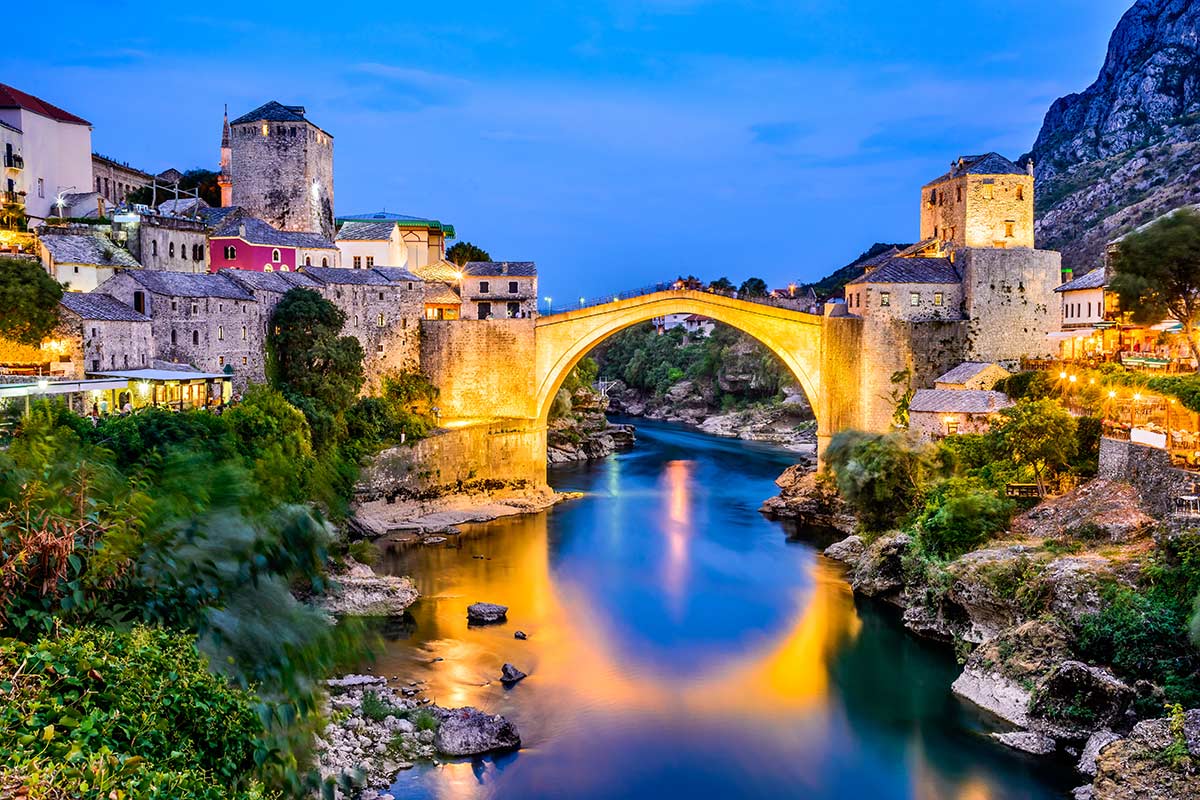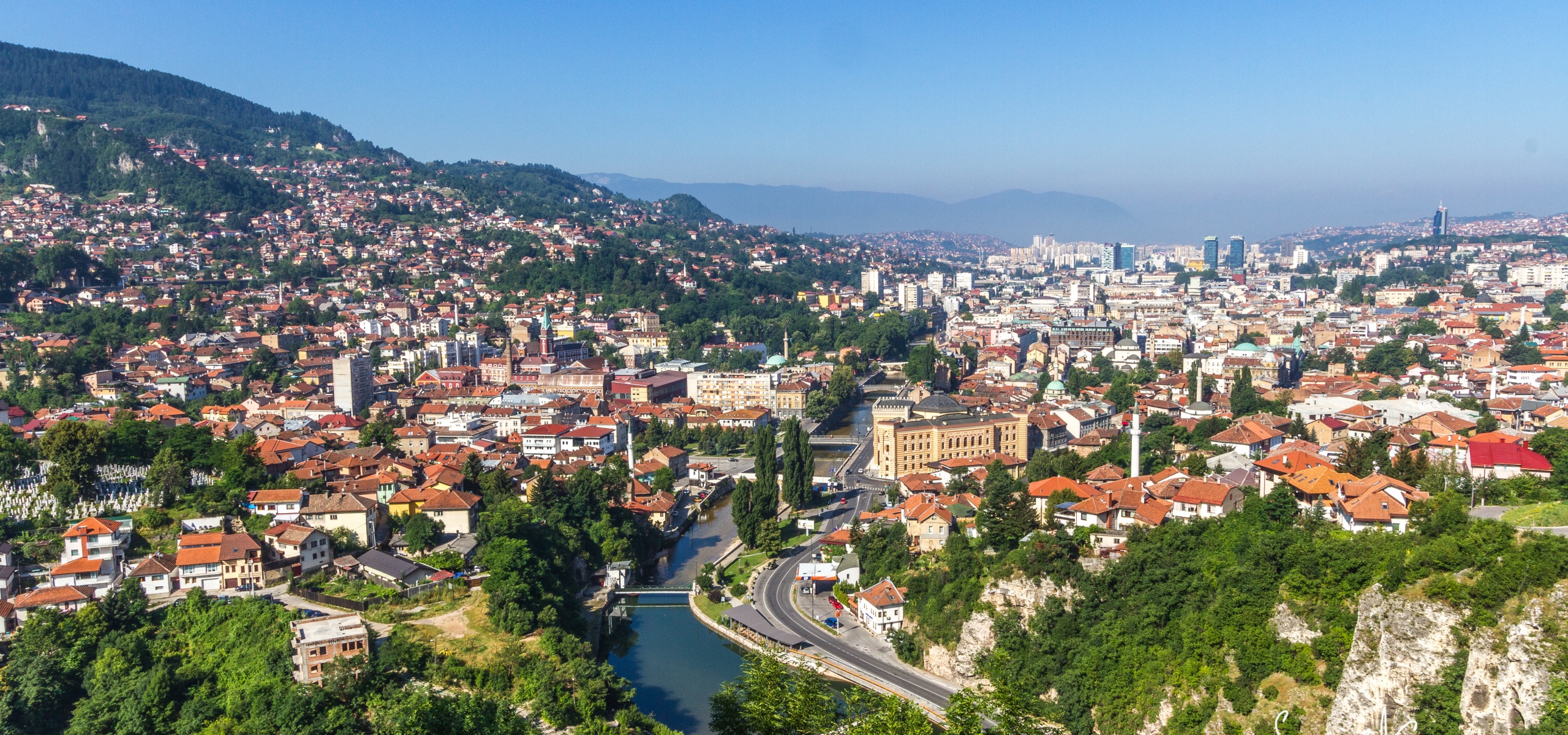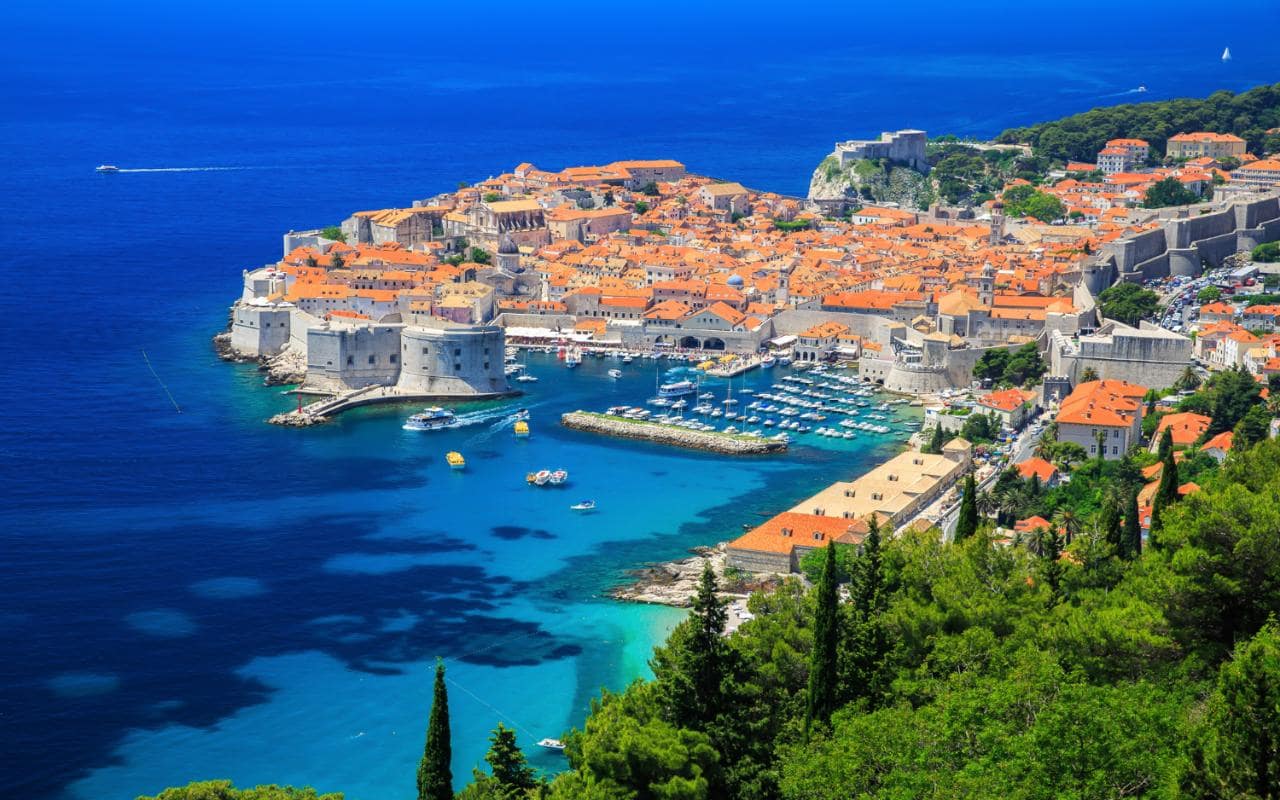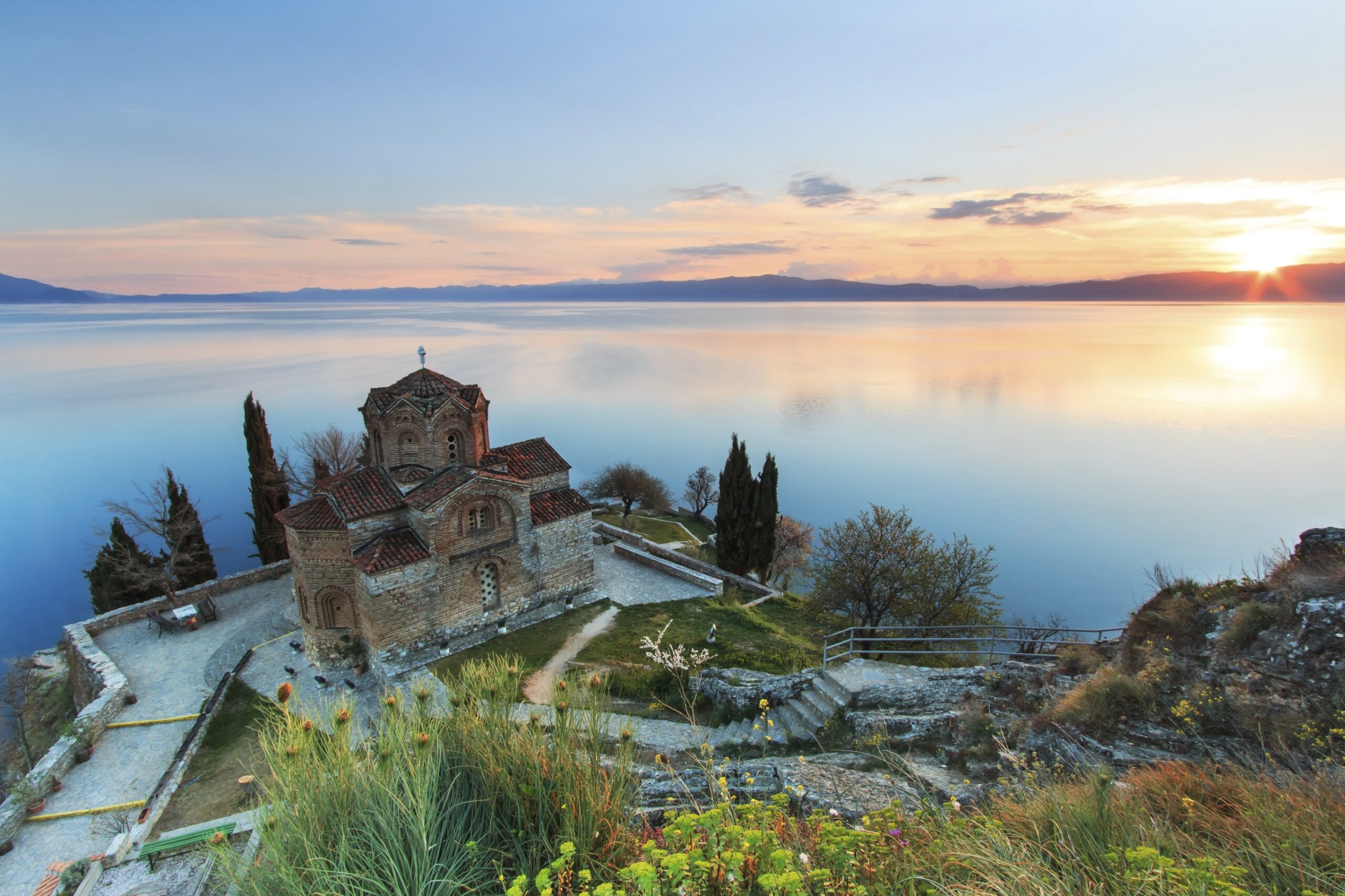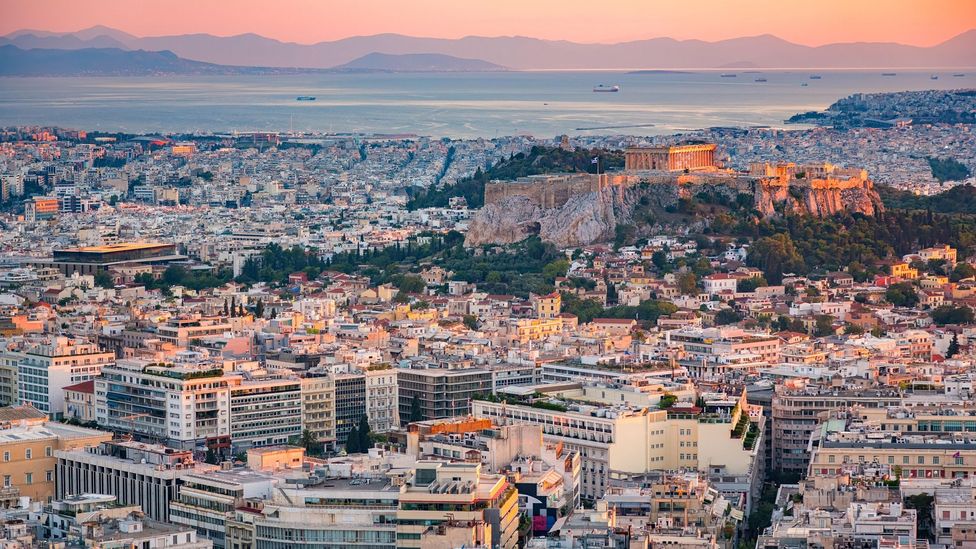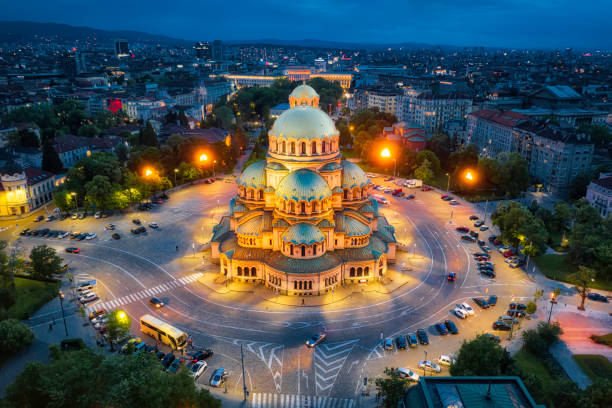Full day tour from Sarajevo to Belgrade starts at 7 a.m. with visits to Visegrad, Andricgrad, and Drvengrad offering you not only a cozy transfer between the two places but also the opportunity to explore interesting places in East Bosnia and Serbia. In this full-day connecting tour from Sarajevo to Belgrade you will see the UNESCO-protected Old Bridge of Visegrad and an amazing architectural and cultural complex – Visegrad. You will visit one of the oldest monasteries in Bosnia – Dobrun Monastery and enjoy discovering an amazing Ethno village – Drvengrad. In the end, you will have an unforgettable experience – the Saragan Eight Train ride.
STOP 1: Visegrad and its UNESCO Old Bridge (1h)
After a 2-hour ride from Sarajevo, we will arrive in Visegrad – a small town in the eastern part of Bosnia and Herzegovina. It is located in the valley of Drina river, in the hilly slopes gently rising high into the mountains, over 1000 meters in height.
This town is full of pretty streets but we will dedicate our visit to The Old Stone Bridge, the endowment of Grand Vizier Mehmed Pasha Sokolovic. He is one of the great Ottoman military leaders of Bosnian origin. At the peak of his power, he becomes Grand Vizier or the Prime Minister by today’s standards. In the ascendant of his powers, he ordered that the most beautiful bridge must be built in Visegrad on the Drina river. The main architect of the bridge was Mimar Sinan, the greatest architect of the Ottoman empire. Mimar Sinan built the bridge in 1577. Interestingly, the bridge has 11 stone arches, a big stone portal, and a sofa in the middle. It is a masterpiece of architecture of that era. The Bridge is one of the most important national monuments of Bosnia and Herzegovina. In 2007 it has entered the UNESCO list of World Heritage Sites. Ivo Andric described this bridge and its amazing history in the book “The Bridge on the Drina”. In 1961 Ivo Andric won the Nobel Prize for Literature. This famous bridge symbolizes strength, permanence, and stability despite all disasters that happened in this region. Leaders come and go, war rages and natural catastrophes happen, but the bridge still stands and watches over the lives of the people who cross the river – that is something Andric describes in his novel majestically.
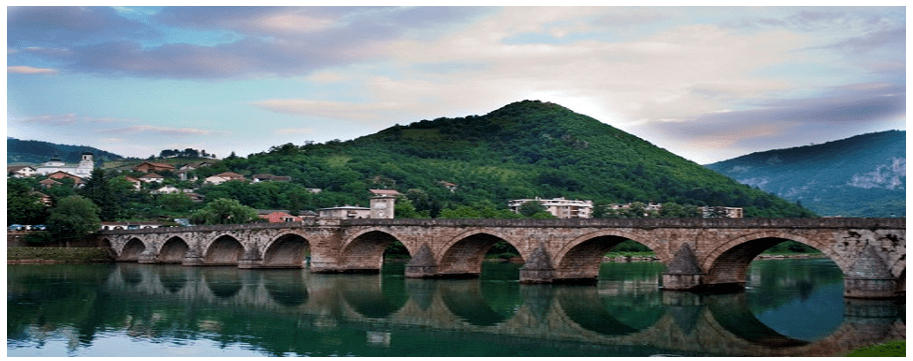
STOP 2: Andricgrad (Andrictown) and lunch (2h 30 min)
Just nearby this famous bridge is another tourist attraction – Andricgrad (Andrictown) also known as Kamengrad (Stonetown). Andricgrad is a project of a famous film director Emir Kusturica. He was inspired by the events and characters of mentioned famous writer, and Nobel prize winner, Ivo Andric. It is a tourist, cultural, administrative, and educational complex, situated on a peninsula between the rivers Drina and Rzav in Visegrad.
In architectural terms, the city itself is a mix of different eras and styles that have changed through the history of this area. For instance, you can see the Byzantine style, the Ottoman period, the Renaissance, and Classicism. Some of the main objects of Andricgrad are Ivo Andric Institute, Memorial House, Centre for Slavic languages, Fine arts Academy, Townhall, Renaissance theatre, multiplex cinema, souvenir shops, coffee bars, and much more. Finally, Andrictown was officially opened for visits in June 2014. After a visit to Andricgrad, we will have lunch in a local restaurant.
STOP 3: Monastery Dobrun (30 min)
Before we cross the border between Bosnia and Herzegovina and Serbia we will visit Dobrun monastery. Dobrun Monastery is located in the picturesque mountainous region. Rocky hills and the gorge of the mountain stream surround this monastery.
Duke Pribil and his sons Stefan and Petar built it in 1343 and dedicated it to the Annunciation. Frescoes decorate the entirety of its interior. The most important frescoes preserved up to today are scenes of Tsar Dusan and his wife Jelena and their son Uros. Also the composition of Duke Pribil and his sons and son-in-law Stano.
At the turn of the 18th and the 19th-century, the locals deserted the Monastery. During its history, Dobrun Monastery was several times destroyed and rebuilt. Surely, Dobrun Monastery experienced its worst destruction during the Second World War. The Germans used it as ammunition storage and blew up in 1945 on their withdrawal. The local authorities restored the Dobrun Monastery in 1946.
STOP 4: Ethno village Drvengrad (1h)
The next stop will be Ethno Village Drvengrad. Drvengrad means wooden town and that’s exactly what you’ll find here. Everything is made of timber from conifer trees. Interestingly, the village is also known by the name Kustendorf, which means “a coastal village”.
It is located in the Zlatibor region in the nature park Mokra Gora, in Serbia. It’s a traditional village, built by the mentioned film director Emir Kusturica.
Interestingly, Kusturica started this project with a few houses built as scenery for shooting his movie “Life is a Miracle”. Soon afterward, the concept of making something “unordinary” gained traction and the few initial wooden huts mushroomed into a sophisticated ethnic-village complex.
Also, Drvengrad is a traditional village in its shape and structure. It is rectangular, surrounded by a wooden fence, with the entrance gate placed at one end of its long axis and the main street extending to the other end.
Moreover, Drvengrad was inaugurated in 2004. After receiving the Philippe Rotthier European Architecture award in 2005, Drvengrad has pronounced the best architectural achievement in Europe in the previous 3 years. The village gained a status of a 4-star town hotel complex.
Since 2008, every year the village hosts Kustendorf Film and Music Festival. With so many attractions in this small village, it is difficult to leave disappointed. Certainly, Kusturica has built a cozy little piece of heaven where everyone can find some relaxing distractions from their everyday life.
STOP 5: Sargan Eight Train ride (1h)
Nearby Drvengrad, you can enjoy the train Nostalgia. Sargan Eight is an old-fashioned narrow-gauge railway. Its construction was finished in 1925. Unfortunately, the narrow-gauge railways were no longer used in the ’70s in Yugoslavia.
Accordingly, this part on the railways in Mokra Gora and Nostalgia Train that we have preserved today represents a major tourist attraction. Certainly, you are going to enjoy the beautiful scenery on this ride that you will remember.
Finally, after the Sargan Train ride, we proceed back to Sarajevo with a drive of around 2.5h. Arriving at the hotel around 7 p.m. Dinner in the hotel.







